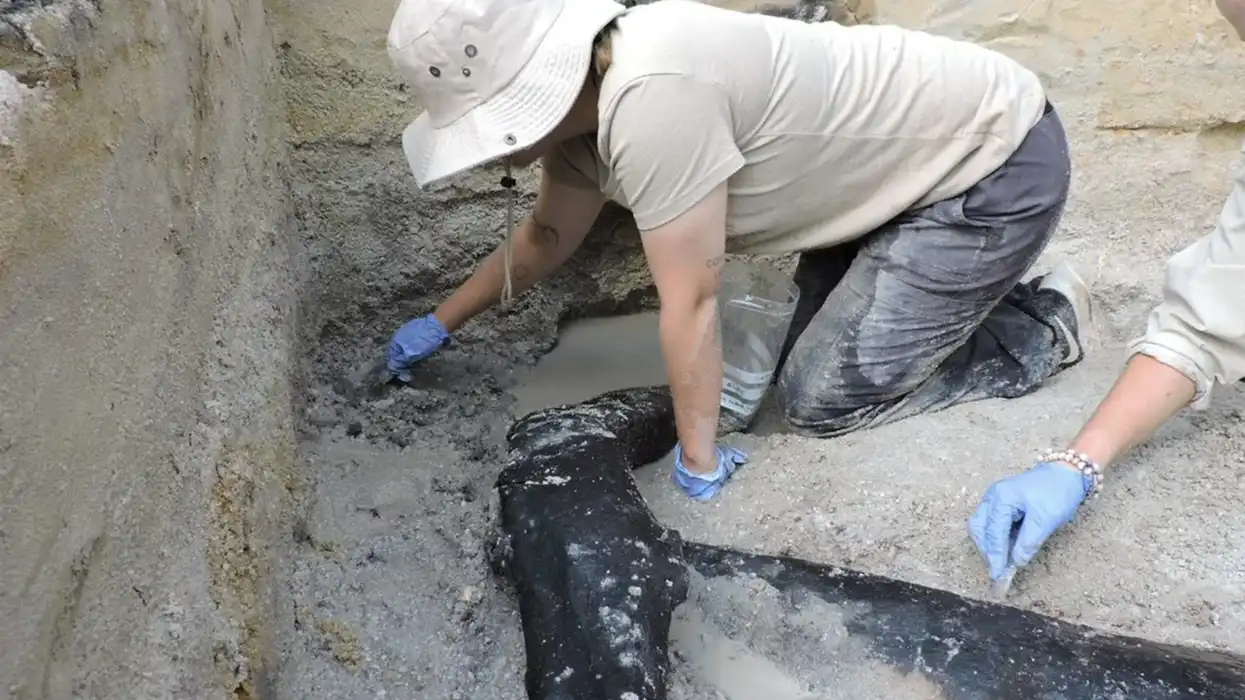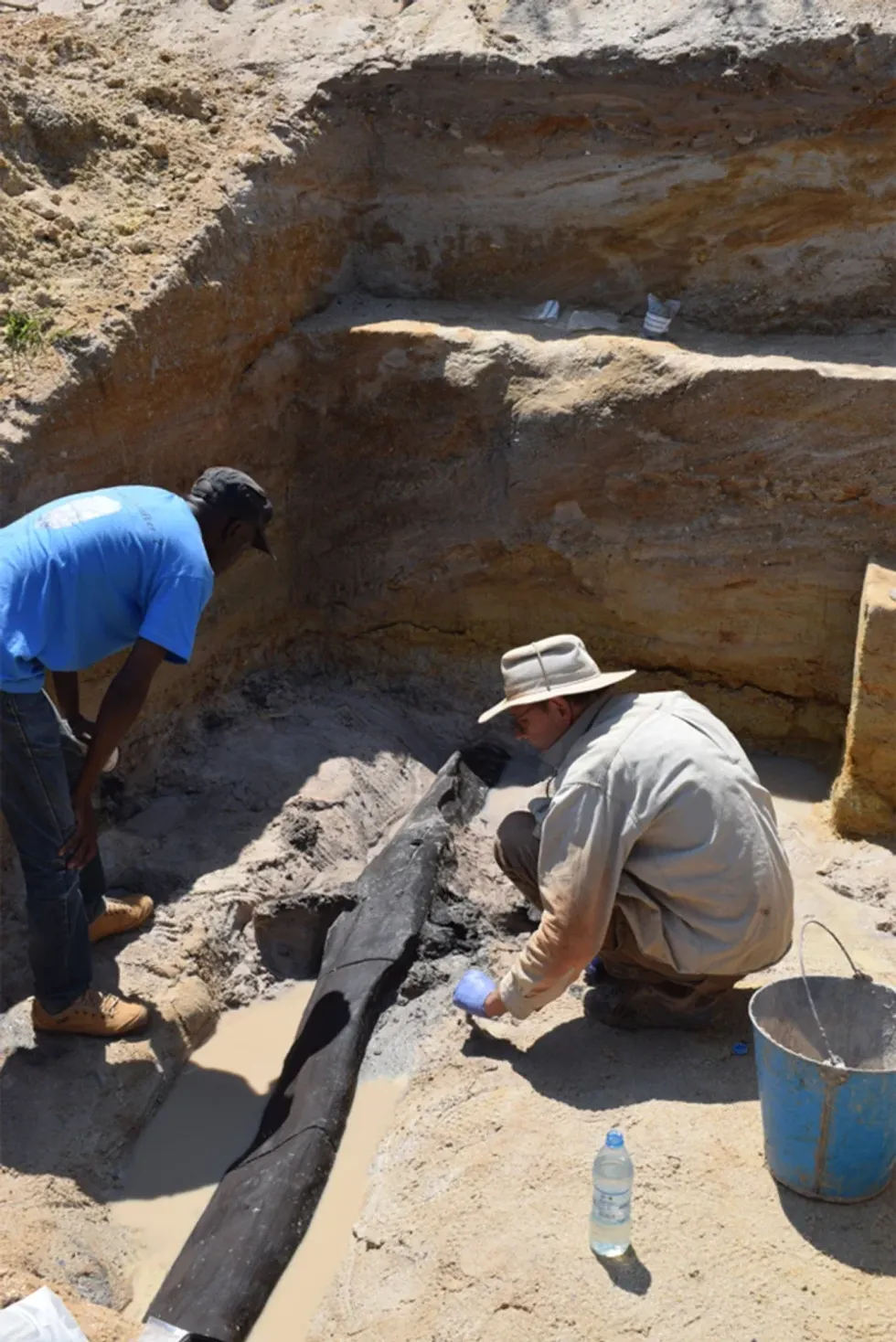Alex Daniel
Sep 21, 2023

Analysis confirmed the logs were about 476,000 years old.
Larry Barham, University of Liverpool
The world’s oldest known wooden structure is nearly half-a-million years old – and it’s only just been discovered.
Archaeologists in Zambia found the simple structure made up of two interlocking logs on the meandering riverbanks above the Kalambo Falls.
The logs have a notch deliberately crafted into the upper piece of wood, allowing them to fit together at right angles.
It appears to show that stone-age people may have built shelters, a discovery which changes archaeologists’ understanding of early humans.
“This find has changed how I think about our early ancestors,” archaeologist Prof Larry Barham said.
The University of Liverpool scientist leads the Deep Roots of Humanity research project, which excavated the ancient timber.
Their findings were published in the journal Nature.
“They made something new, and large, from wood,” Prof Barham said.
“They used their intelligence, imagination and skills to create something they’d never seen before, something that had never previously existed.”

The researchers also uncovered ancient wooden tools, including sticks used for digging.
Further analysis confirmed the logs were about 476,000 years old.
“One [of the logs] lying over the other and both pieces of wood have notches cut into them,” University of Aberystwyth archaeologist Prof Geoff Duller said.
“You can clearly see those notches have been cut by stone tools.
“It makes the two logs fit together to become structural objects.”
“That the wood has remained in place and intact for half a million years is extraordinary. And it gives us this real insight, this window into this time period,” added University of Aberystwyth professor Geoff Duller, coauthor of the study.
Wood simply rots away unless it is preserved in very specific conditions.
In the riverbanks in Zambia, the structure was waterlogged and preserved in the same way we might pickle something – but for millennia.
Previously, one of the oldest known-wooden objects was a 400,000-year-old spear at Clacton-on-Sea in Essex, found in 1911.
The researchers measured the age of layers of earth that it was buried in using a technique called luminescence dating.
Grains of rock absorb natural radioactivity from the environment over time. That radioactivity can be released and measured by heating up the grains and analysing the light emitted.
It is unclear what species of ancient humans built it, because no bones have been found at this site so far.
While the structure was probably not part of a permanent dwelling, it could have been part of a platform for a shelter.
“It might be some sort of structure to sit beside the river and fish,” said Prof Duller.
“But it's hard to tell what sort of [complete] structure it might have been.”
Sign up to our free Indy100 weekly newsletter
Have your say in our news democracy. Click the upvote icon at the top of the page to help raise this article through the indy100 rankings.
Top 100
The Conversation (0)













